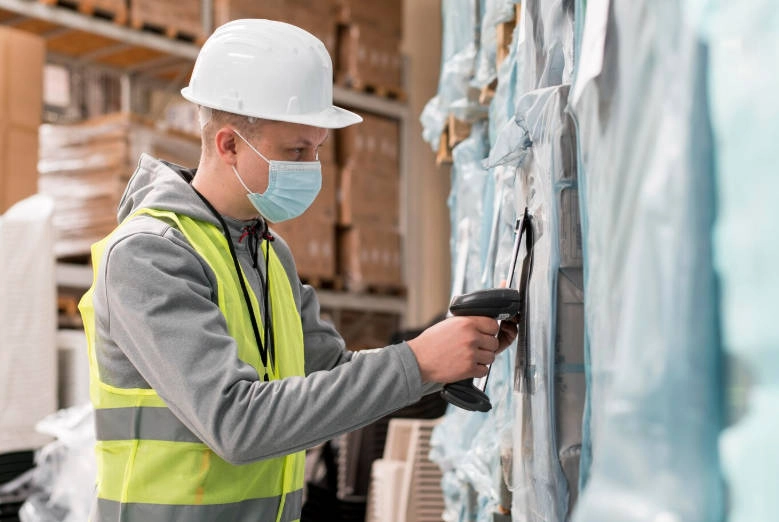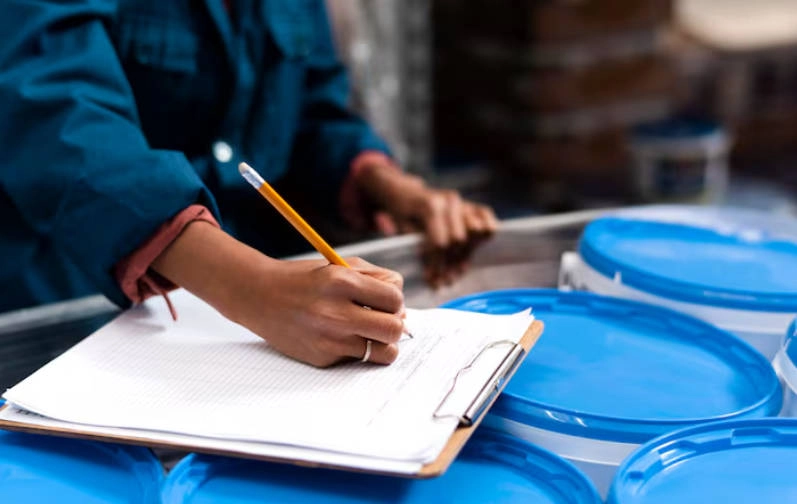
A Material Safety Data Sheet (MSDS) is basically a fact sheet that tells you everything about a chemical or mixture. It covers the dangers, how to handle it safely, how to store it, and what to do if something goes wrong. These days pretty much everywhere (especially places using the UN GHS system) has switched from the old MSDS name to just SDS – Safety Data Sheet.
An SDS always has the same 16 sections. You’ll find stuff like what the product is, what hazards it has, what it’s made of, first-aid info, how to fight fires, spill cleanup steps, safe handling rules, protective gear, physical properties, how stable it is, toxicity details, and the rest.
The big change from the old days? Old MSDS looked different depending on who wrote it. The new SDS looks exactly the same no matter where you are – super helpful when you’re sending stuff across oceans, like most Amazon FBA sellers do.
Freight companies and forwarders need the sheet to figure out how risky the product actually is for FBA Prep Services. Is it going to catch fire? Poison someone? Blow up? That info decides what kind of box it goes in, what labels it needs, and whether it has to sit far away from other stuff on the truck or ship.
No sheet = they have no clue how to move it safely. Simple as that. One example: flammable liquids need special drums and can’t sit near anything hot. Corrosive stuff can’t touch wood or paper.
If something leaks or catches fire on the road, firefighters and cleanup crews grab the SDS first. It tells them exactly which extinguisher works, what gloves and masks to wear, and the safest way to clean the mess.
It also lists 24/7 emergency numbers. Fast info can literally save lives and keep a small spill from becoming a big disaster.
Every major transport rule (IMDG for sea, IATA for air, ADR for European roads/rails) says dangerous goods must come with an SDS. It proves you classified the product correctly.
Skip it or mess it up and you’re looking at fines, stuck containers, or customs sending everything back.
I always tell people: think of the SDS as the product’s passport. Without a valid one, it’s not crossing any borders. Carriers check it to see if your item is regular cargo or needs full dangerous-goods treatment (anything from explosives Class 1 to random nasty stuff Class 9).
For Amazon sellers, nine times out of ten the shipping line or airline won’t even let you book space until they see a proper SDS. No SDS = no booking = everything sits at the factory.
Doing the prep correctly from the start and picking the right shipping method keeps customs happy and gets your stock into FBA fast.

Carriers have to make sure the product won’t cause trouble in real-life conditions. Example: some liquids give off flammable gas when it’s 40 °C in the container – the SDS tells them that.
No sheet, they just refuse the load. End of story.
The sheet gives the UN number, official shipping name, hazard class, and packing group. Those four pieces of info are what fill out the Dangerous Goods Declaration form.
Everyone from the factory to the final warehouse then knows exactly how to label and handle it.
Wrong or missing SDS = customs hold, massive fines, or Amazon destroying the whole shipment. I’ve seen sellers lose thousands because of this. A good agent handles all the paperwork so you never hit that wall.
Perfume, essential oils, cleaners, paint, glue, hand sanitizer, nail polish – pretty much anything that can burn or has alcohol in it needs one for air and sea.
Power banks, laptops, kids’ toys with button cells, electric scooters – lithium batteries are watched closely because they can start fires. The SDS confirms the exact power rating and battery type.
Spray cans (deodorant, etc.), face creams with strong chemicals, scented candles, matches, big magnets, anything packed with dry ice – all usually require an SDS.
People who do this every day know instantly which documents each SKU needs.
Local short trips might be okay with a simple sheet. But any international air or ocean move needs the full 16-section GHS version – no shortcuts.
Plenty of free templates floating around, and good guides that walk you through every box.
X Sourcing can offer third-party Lab testing services with partner facilities. Prices may vary, but we guarantee to provide the best pricing for the inspection.

In 2025 and forward, if your product has any kind of chemical or battery in it, the SDS isn’t optional. It takes care of safety checks, classification, legal requirements, and gives first responders what they need.
Missing paperwork is still the 1 reason Amazon shipments get rejected or trashed at the warehouse. X Sourcing’s team of highly-skilled professionals can help guide your product through every step—from sourcing to FBA delivery. You can concentrate on boosting sales and improving your store ranking on Amazon by handing all offshore sourcing affairs over to X Sourcing.
A: Technically no – the official name everywhere is now SDS (Safety Data Sheet) with the fixed 16-section layout. Everyone has moved away from the old random MSDS style.
A: No, plain plastic toys or cotton T-shirts are fine. But anything with liquid, batteries, sprays, strong smells, sanitizer, perfume, nail polish – yes, almost 100 % needs a proper SDS or the forwarder and Amazon will say no.
A: Carrier refuses booking → shipment sits → customs grabs it → huge fines or goods destroyed. Seen it many times.
A: Easiest is ask your supplier first. If they don’t have it, send a sample to a lab or use a compliance service. Just make sure whatever you get is updated for the current 2025 IATA/IMDG/GHS rules.